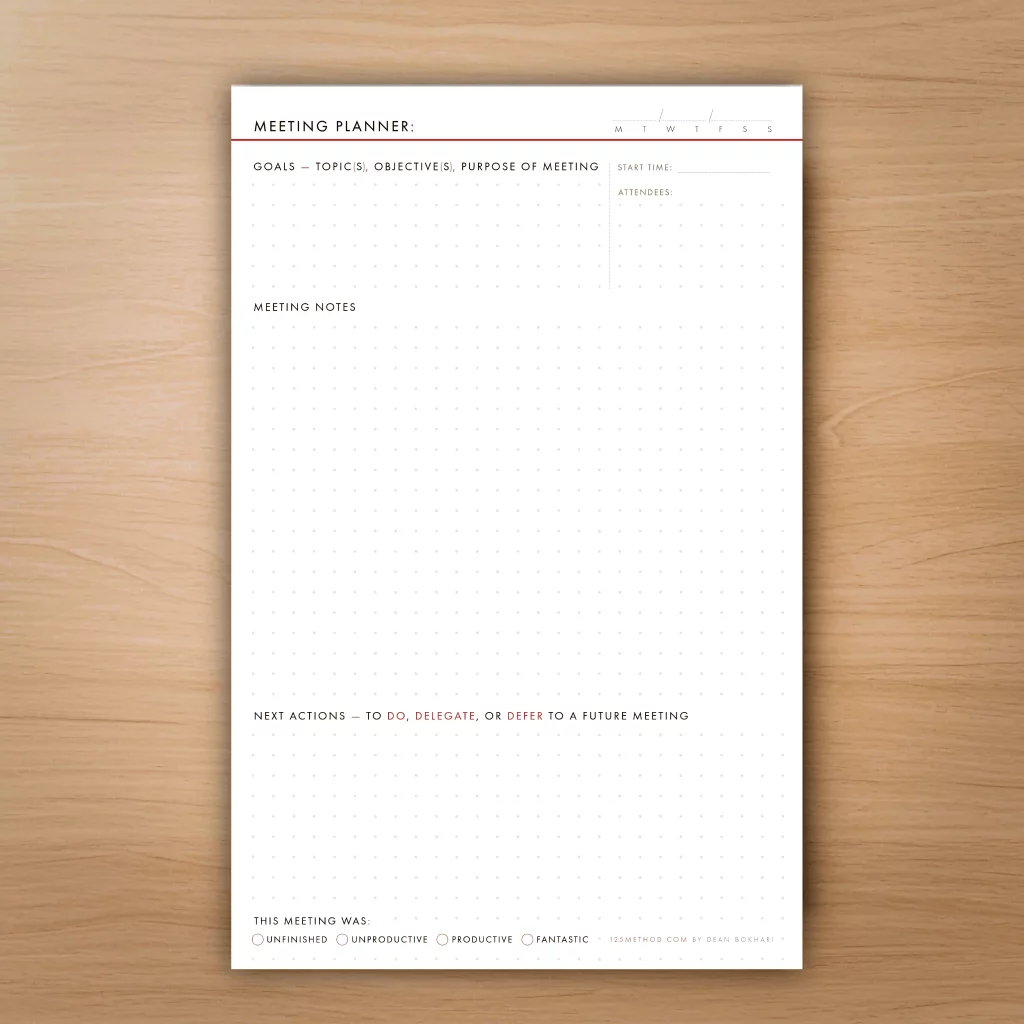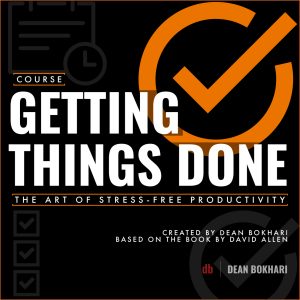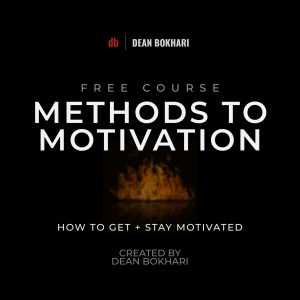1. Set Clear Meeting Goals + Objectives.
If you just stroll into a meeting without knowing why, it’s not going to be a productive meeting. Plain and simple. If you don’t know the goals and objectives prior to walking in, you’ll waste half your time figuring out “what we should talk about today.” Before you walk in, know why you’re there. So, identify the purpose of your meeting — is it for feedback? project updates? career development?
My personal preference for any meeting is to keep it as tight and focused as possible… And in most cases, that means having no more than a single major theme or outcome you seek to accomplish by having this meeting.
2. Prepare an Agenda.
Structure equals success. Outline the main topics of your meeting ahead of time by jotting down one to three core topics to cover. For example:
- Get progress + status update on Widget Project
- Discuss challenges + opportunities with Betty Boop using the positivity sandwich method: start positive, ease into challenge-area, close with a positive tone.
3. Review Past Notes.
Before every meeting I attend, I like to quickly look over any notes I might have taken from the previous meeting, if there was one. Doing this reminds me of any action items from the previous meeting that may be unresolved or in need of follow-up.
- Reflection + review drive progress. So, look back at your last meeting and ask yourself: what got done, what didn’t, and what still needs attention? Use your Meeting Planner to pick up right where you left off.
4. Gather What You Need for the Meeting.
Bring any relevant reference material along to the meeting to support the discussion: reports, print-outs, data, ideas, and most important of all – questions. Keep your questions and/or materials organized and ready to go. It’ll help you look sharp and responsible. And it’ll help the meeting run as smooth as butter.
5. Be Open to Feedback.
Feedback fosters growth… Dish out your feedback with empathy + clarity. Receive feedback with grace + gratitude (even if it stings). Approach every meeting with a growth mindset.
6. Listen Actively + Take Notes by Hand.
If you’ve taken my training programs on Crucial Conversations, or How to Win Friends + Influence People, then you already know how important active listening is… It can be the difference between a productive meeting vs a meeting that turns into a sequel of the movie Animal House.
- Active listening is the practice of being fully present in a conversation. When you’re listening actively, you’re focusing, understanding, and responding thoughtfully to what someone is saying (rather than just hearing their words).
- For example: When Andrew says, “I’m feeling overwhelmed with deadlines,” Zohran responds, “It sounds like you’ve got too much on your plate right now, how can I help?”
- Presence is the key to connecting with any conversation partner. Whether you’re holding a 1-on-1 with an employee or running a board meeting full of stakeholders: put the phone away and close the laptop. Pick up a pen and actually listen. Writing things down by hand helps you understand and retain significantly more than taking notes on a laptop or device.
7. Close Every Meeting with Next Actions.
End every meeting with clear next actions you can follow-up and follow-through on. These are things you’ve got to either do, delegate, or defer.
- Write down your next actions, and review them in your Meeting Planner at a later time or prior to your next meeting.
- Any next actions that you’re delegating should be clearly communicated to the person taking it on.
- To delegate like a boss, remember two words: Who and Due. Jot down who the action belongs to and when it’s due. Always confirm that whoever you’re delegating to understands that they’re now the owner of that action.
Make every meeting meaningful and productive. With the Meeting Planner.

If you’re sick of having or holding unproductive meetings, the Meeting Planner is for you. Designed to help you lead and leave every meeting with clarity and next actions. No more confusion. No more disorganization. No more unruly meetings.
Whether you’re running the meeting or showing up for one, this elegant planning pad gives you the structure to make every meeting meaningful and actionable.
Use it to define meeting goals + objectives, capture insights + meeting notes, jot down + delegate next actions, and rate the effectiveness of each meeting so you can continuously improve how you collaborate + communicate.
Key Benefits:
- Start with Meeting Objectives. Prior to each meeting, use the Meeting Planner to lock in the primary goal(s), topics, and purpose of your meeting, so everyone knows why they’re there and what to expect.
- Capture What Matters. Use the clean, minimal “Meeting Notes” section to jot down essential insights, ideas, and decisions.
- End with Action. No more “let’s circle back.” The Next Actions area helps you instantly decide what to Do, Delegate, or Defer – which maintains continuous progress between meetings.
- Maintain Accountability. Rate each meeting as: Unfinished, Unproductive, Productive, or Fantastic to track improvement over time.
- Simple, Smart, and Portable. Spectacularly spacious and perfectly portable at 5.5″ × 8.5″, it’s compact enough to carry anywhere, yet spacious enough for clear thinking and effective note-taking at your desk.
Details + Specs:
- Size: 5.5″ × 8.5″ — ideal for desk, bag, or folio
- Paper: Ultra-premium 90 gsm stock — smooth, thick, and fountain-pen-friendly
- Design: Minimalist layout with clean typography and intuitive flow
Sections Include:
- Meeting Goals / Topics / Purpose
- Attendees + Start Time
- Meeting Notes
- Next Actions — Do, Delegate, or Defer
- Meeting Quality Rating
- Day Tracker (Mon – Sun)
- Binding: Top-bound tear-off pad for quick grab-and-go use
The Meeting Planner is perfect for:
- Leaders, professionals, executives, HR managers, entrepreneurs, sales associates, managers, employees – anyone who wants to hold more productive + meaningful meetings.
Made in California, USA | Free Shipping On All Orders
Footnotes:


